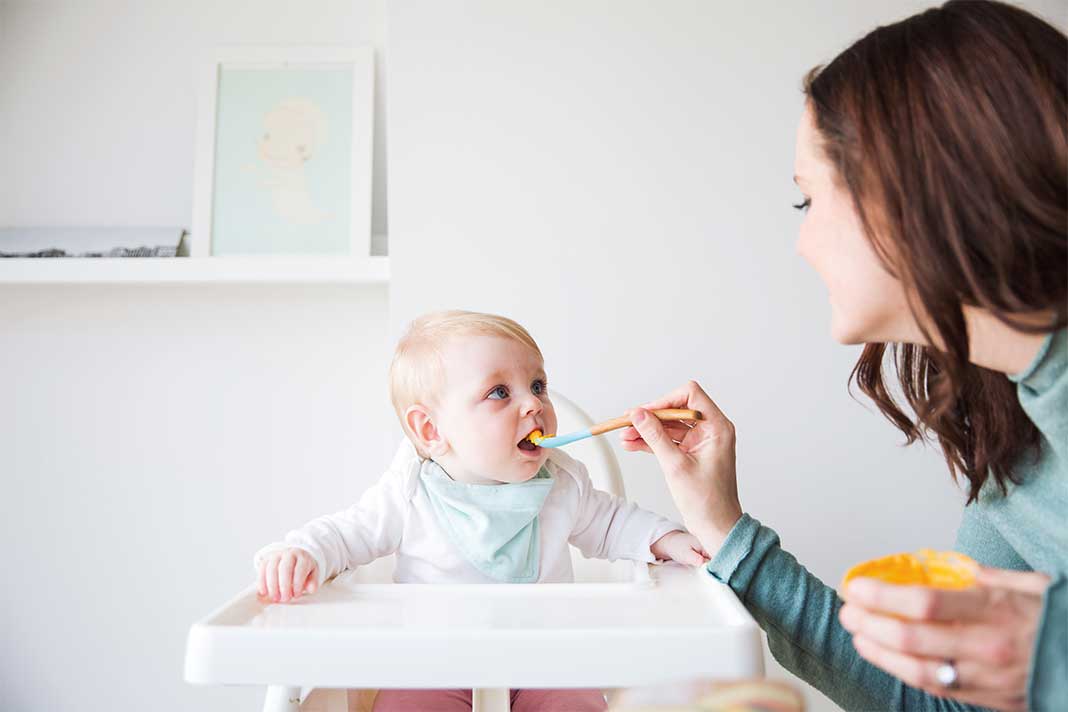Dr Sophie Niedermaier-Patramani, paediatrician and co-founder of Little Tummy on how to support your baby’s gut health
A healthy gut supports us and our children in a lot of different ways. It assists with digestion to ease problems like constipation or bloating, which have been linked to an unbalanced gut flora, and our gut microbes fight infections and help our immune system to stay strong. It also produces vitamins, such as Vitamin K, which is necessary for blood clotting, and serotonin, a chemical which puts us in a good mood. In order to have a healthy gut and Little Tummy can be the key to that.
The first 1000 days of a child’s life is when the microbiome is developed. The gut microbiome is the community of all the bacteria and other microorganisms living in our intestinal system. The gut bacteria and their environment work together to support your baby’s health.
When babies are born, they start off with less than 100 different species of bacteria in their gut. During the first two years of life, the microbiome becomes more diverse until it resembles that of an adult with more than 1000 different species of microorganisms. Recent research has established an association between an unbalanced gut and different types of diseases, such as diabetes, allergies and obesity. With the gut bacteria being so important for a healthy life, what can we do to support the development of a healthy gut for our children?
During pregnancy
- The development of a child’s microbiome starts in the womb. We know from research that the first bacteria migrate to a child’s gut in the later stages of pregnancy, most likely via the amniotic fluid or the umbilical cord. A mother’s gut bacteria is also transferred to her baby during birth. Establishing a healthy microbiome during pregnancy can, therefore, be a first step to support your baby. Studies have also shown that the birth mode has an impact on a baby’s microbiome as bacteria are transferred from mother to child during a vaginal birth. However, we cannot tell yet, what impact this has on a child’s future health development.
Tip: Try to eat plenty of fibre-rich foods, such as vegetables, fruit, legumes and whole-grain carbohydrates. Fermented foods, such as kefir and kombucha could be beneficial too.
After birth
- Bacteria can also migrate from mother to baby during skin-to-skin contact, especially during the first 24 hours after birth.
Breast milk contains an abundance of good ingredients for your baby and is a great way to support their gut health. When it comes to the microbiome, studies have shown that 30 percent of the beneficial bacteria in a baby’s intestinal tract come directly from mother’s milk. Breast milk also contains human milk oligosaccharides (HMO), small molecules, which feed the gut bacteria and help them thrive. Some formula brands add HMO to their products to mimic the effects of breast milk. Long-term results of studies are in progress, so it is unclear what health benefits HMO added to formula really have. On the other hand, the addition of HMO to infant formula has been proven to be safe and makes it more similar to breast milk. It might, therefore, be a good option for mothers who don’t breastfeed.
Tip: Cuddle as much as you can with your baby, especially in the first 24 hours and with skin-to-skin contact. Try to breastfeed if you can and for how long you feel comfortable. If choosing formula, opt for one containing human milk oligosaccharides (HMO).
Introducing solids
- Around the age of six months babies start to eat solid foods. This is the time when the microbes in their gut start to diversify and slowly reach the state where they are similar to an adult’s gut. This is one of the reasons why a baby’s bowel movements change texture, colour and, alas, odour, during this period.
The fibre in the new foods feed the gut bacteria and support their development. Whole foods with high fibre content are, for example:
- Dark leafy greens, such as broccoli, kale and spinach
- Legumes, such as beans, lentils and peas
- Starchy vegetables, such as sweet potato, chickpea or parsnip
- Whole grains, such as oats, barley and quinoa
Processed foods and high-sugar foods can have a negative effect on gut bacteria and should, therefore, be avoided. Ready-made baby meals from the supermarket shelves are usually heavily heat-processed, which destroys the complex structure of the fibre and sets free a lot of fruit sugar.
Tip: Once your baby is ready to start solids, offer a well-balanced diet of foods rich in fibre. Home-made or cold-pressed meals, such as Little Tummy, should be preferred over heat-treated ones, as they preserve the complex structure of the fibre and therefore help your baby’s gut bacteria to thrive.
Toddler years
- Even when babies are off their milk feeds, the microbiome will continue to diversify. This is why it is important to keep up the good work of the first year of life. A balanced microbiome will help to keep tummy troubles away and to support a strong immune system.
Tip: Children should continue to eat a great variety of fibre-rich foods. A two year-old child should eat about 15mg of fibre per day. This could include oats in the morning, seeds as a snack and a plate of vegetables for dinner.
Find more parenting articles here.






COMMENTS ARE OFF THIS POST